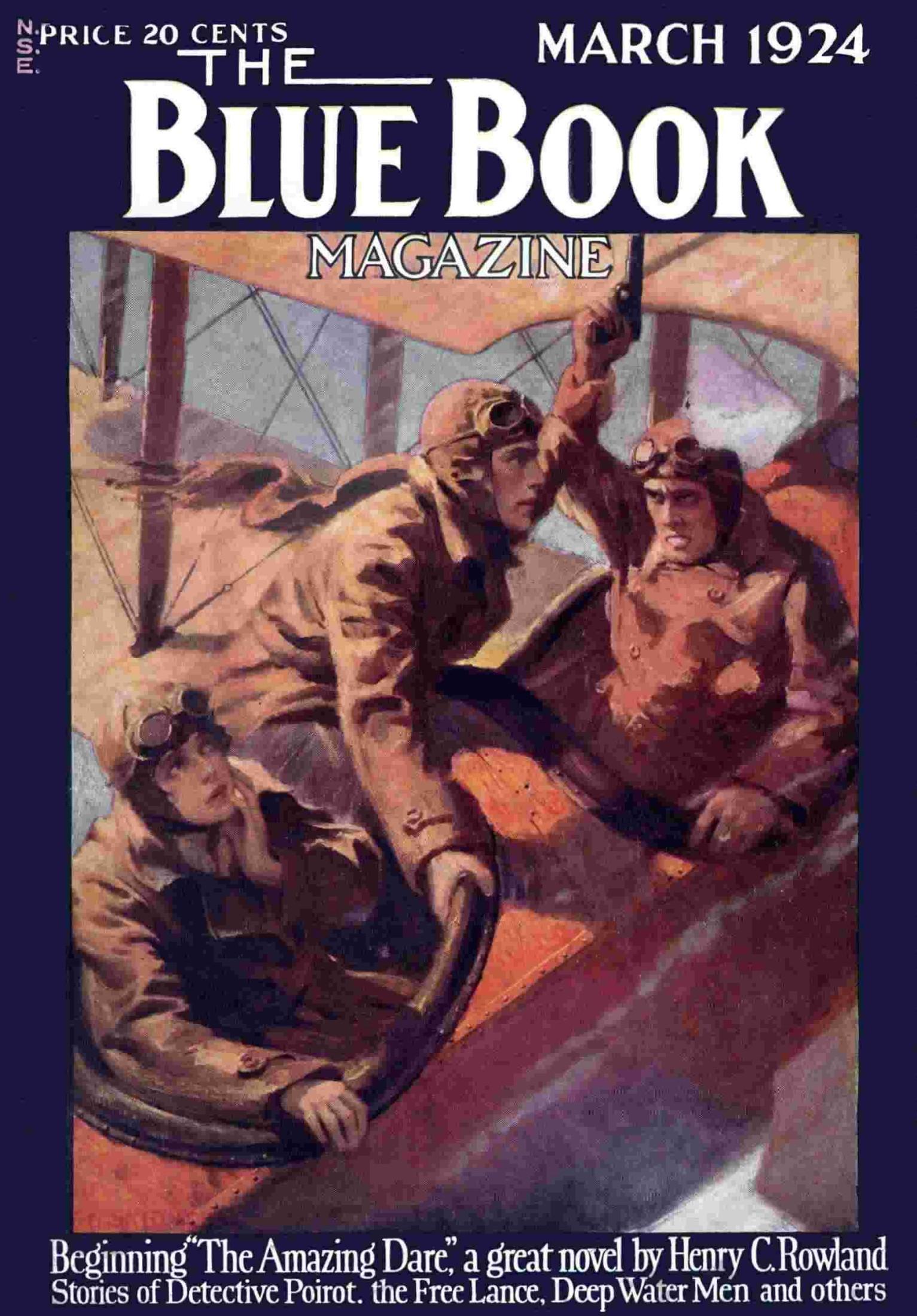NeglectedTropicalDiseasesandPhytochemicalsin DrugDiscoveryChukwuebukaEgbuna&MuhammadAkram &JonathanChinenyeIfemeje
https://ebookmass.com/product/neglected-tropical-diseasesand-phytochemicals-in-drug-discovery-chukwuebuka-egbunamuhammad-akram-jonathan-chinenye-ifemeje/
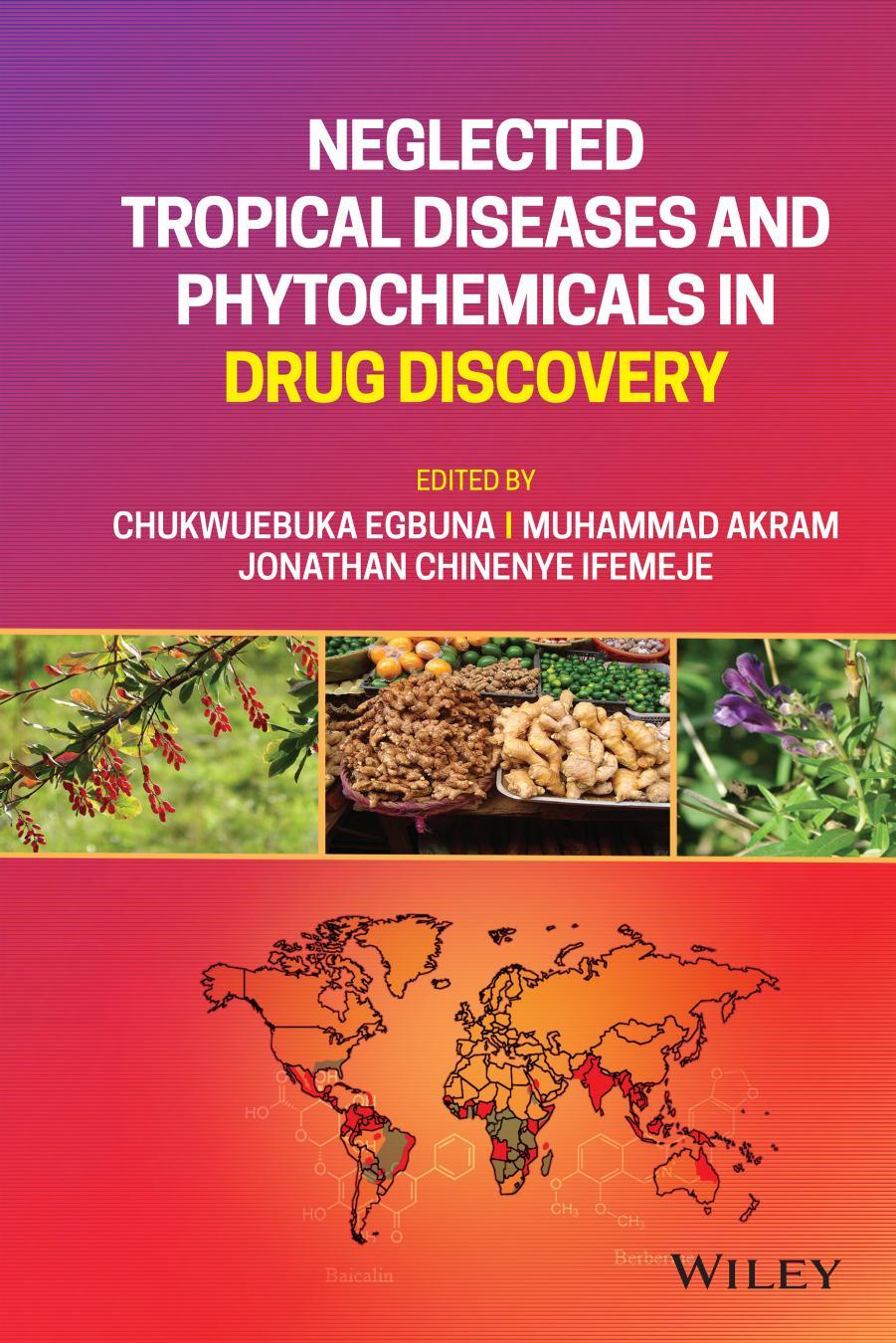
More products digital (pdf, epub, mobi) instant download maybe you interests ...
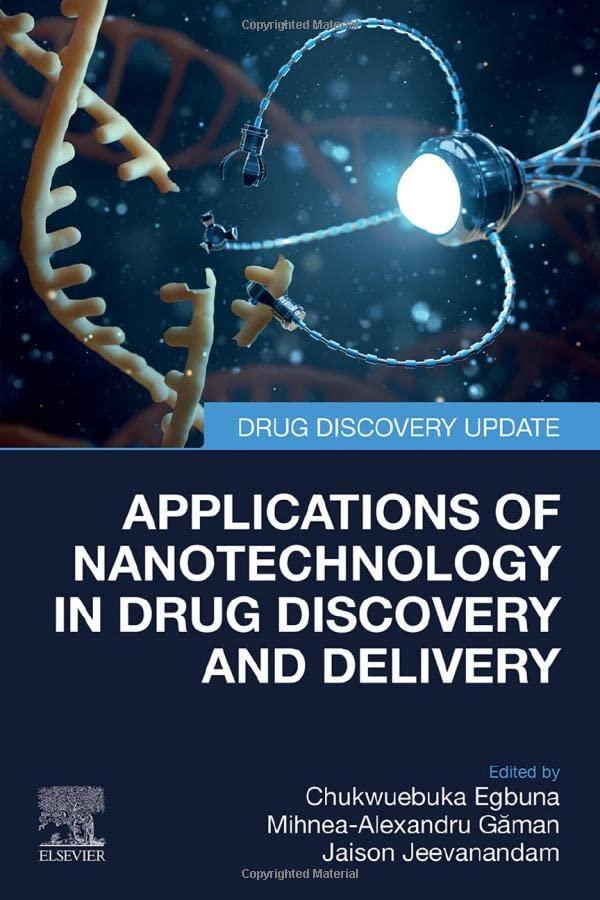
Applications of Nanotechnology in Drug Discovery and Delivery Chukwuebuka Egbuna
https://ebookmass.com/product/applications-of-nanotechnology-indrug-discovery-and-delivery-chukwuebuka-egbuna/
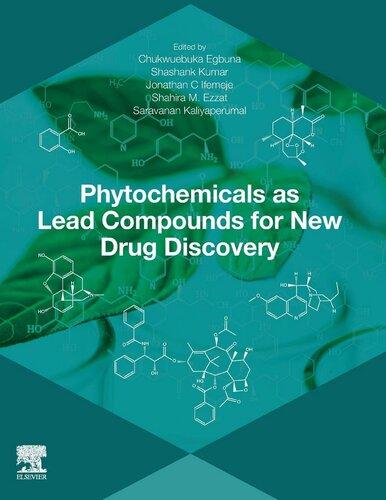
Phytochemicals as Lead Compounds for New Drug Discovery: Prospects for Sustainable Agriculture 1st Edition Chukwuebuka Egbuna (Editor)
https://ebookmass.com/product/phytochemicals-as-lead-compoundsfor-new-drug-discovery-prospects-for-sustainable-agriculture-1stedition-chukwuebuka-egbuna-editor/
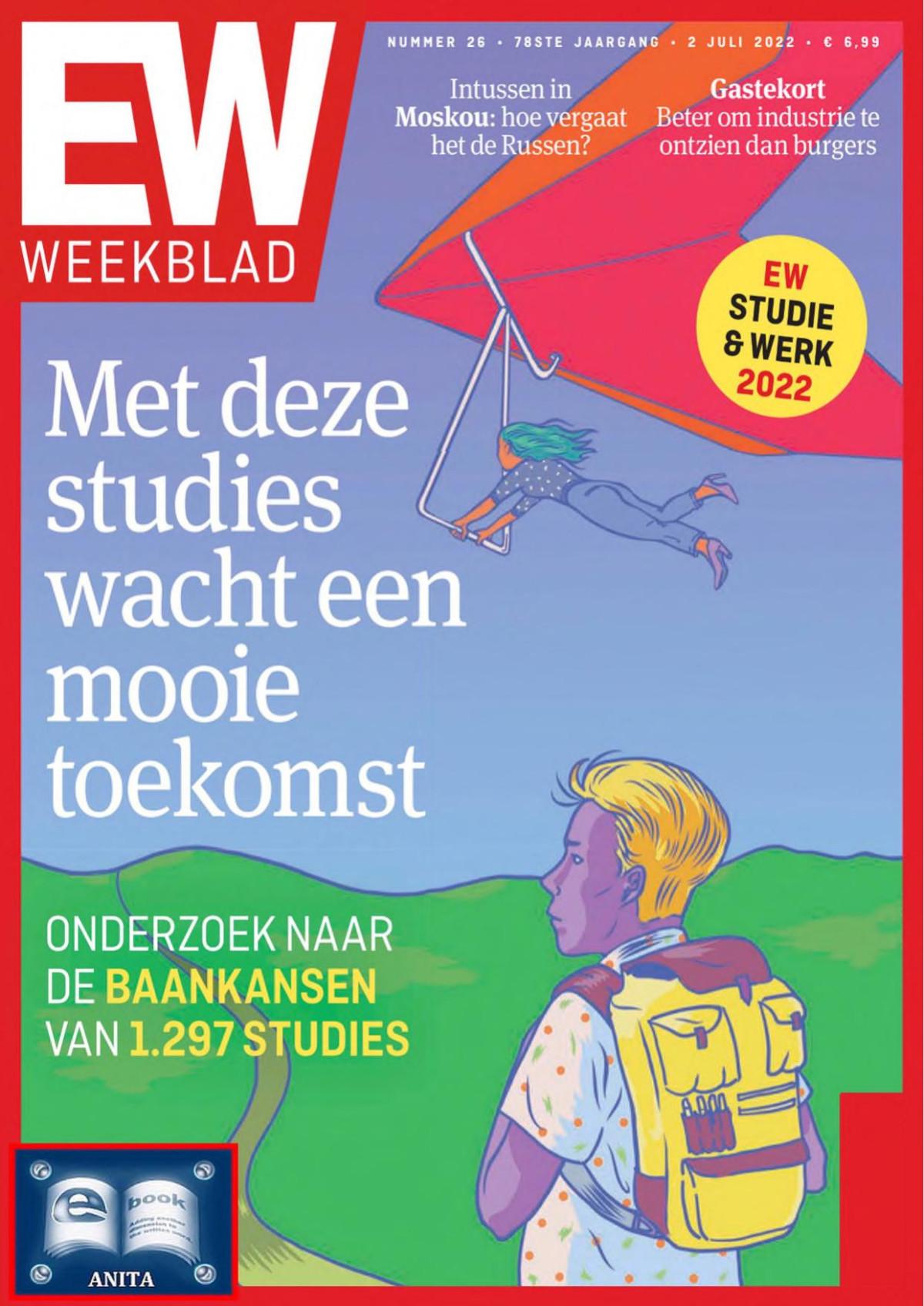
Elsevier Weekblad - Week 26 - 2022 Gebruiker
https://ebookmass.com/product/elsevier-weekbladweek-26-2022-gebruiker/
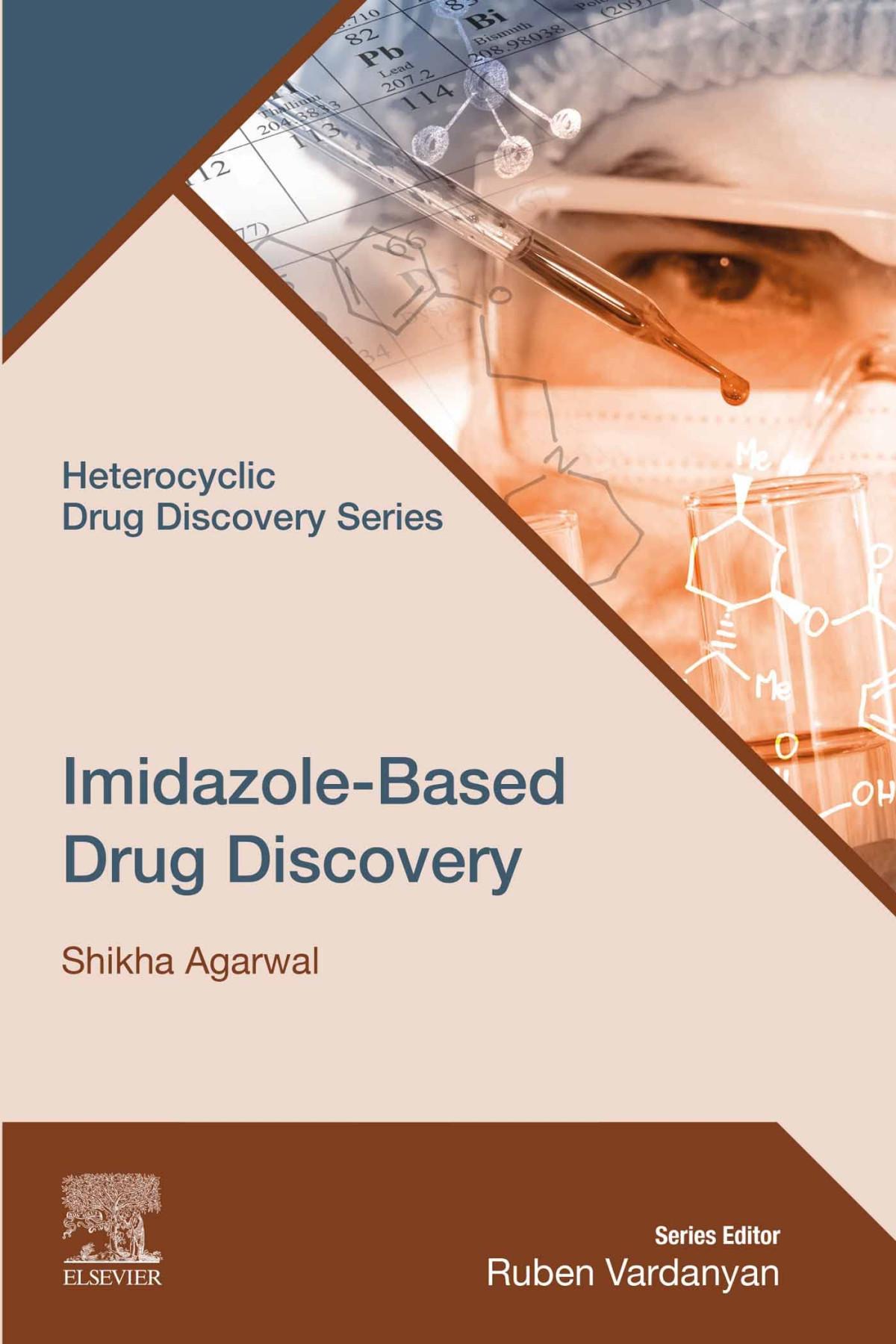
Imidazole-Based Drug Discovery (Heterocyclic Drug Discovery) Shikha Agarwal
https://ebookmass.com/product/imidazole-based-drug-discoveryheterocyclic-drug-discovery-shikha-agarwal/

Jock Seeks Geek: The Holidates Series Book #26 Jill Brashear
https://ebookmass.com/product/jock-seeks-geek-the-holidatesseries-book-26-jill-brashear/
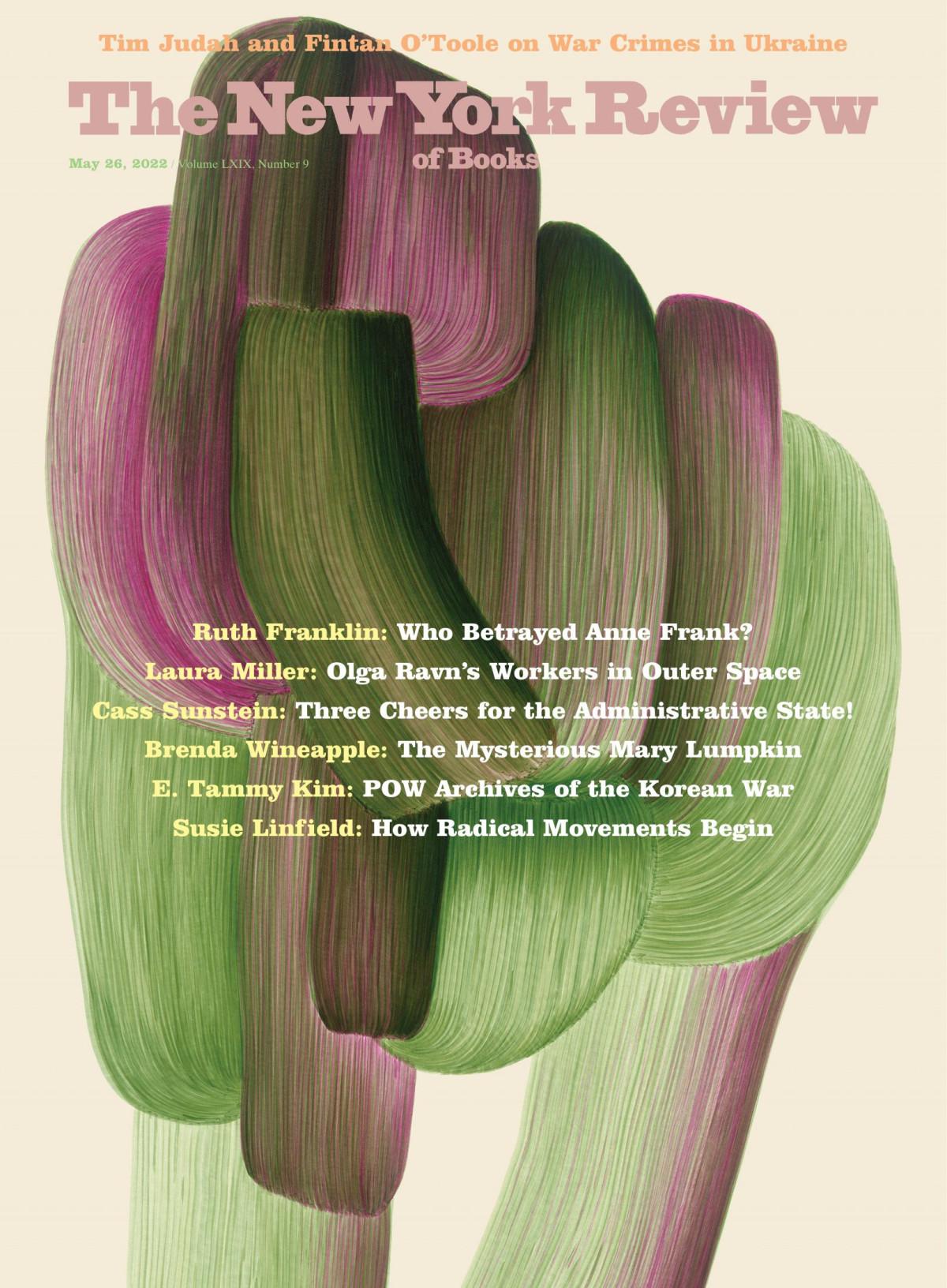
The New York Review of Books – N. 09, May 26 2022
Various Authors
https://ebookmass.com/product/the-new-york-review-ofbooks-n-09-may-26-2022-various-authors/
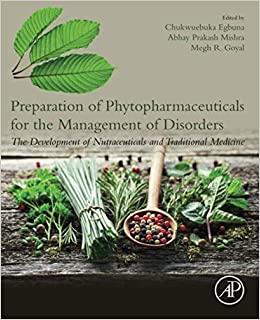
Preparation of Phytopharmaceuticals for the Management of Disorders: The Development of Nutraceuticals and Traditional Medicine Chukwuebuka Egbuna
https://ebookmass.com/product/preparation-ofphytopharmaceuticals-for-the-management-of-disorders-thedevelopment-of-nutraceuticals-and-traditional-medicinechukwuebuka-egbuna/
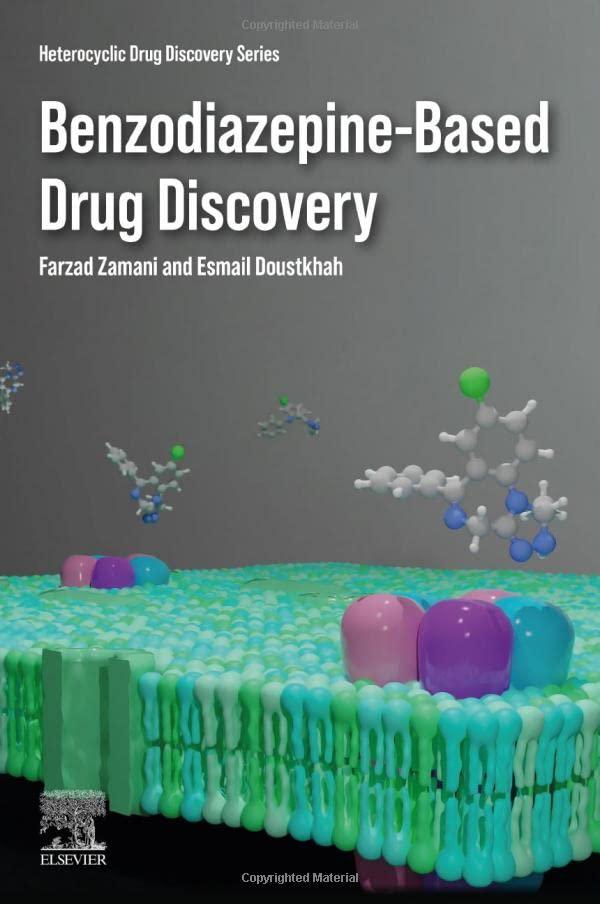
Benzodiazepine-Based Drug Discovery Farzad Zamani
https://ebookmass.com/product/benzodiazepine-based-drugdiscovery-farzad-zamani/
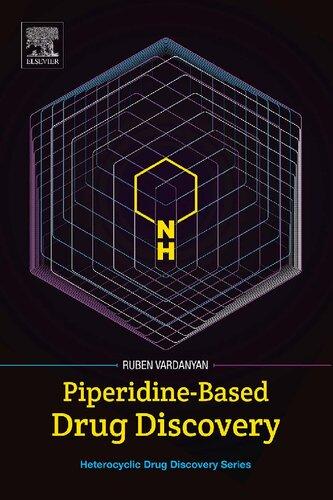
Piperidine-Based Drug Discovery Ruben Vardanyan
https://ebookmass.com/product/piperidine-based-drug-discoveryruben-vardanyan/
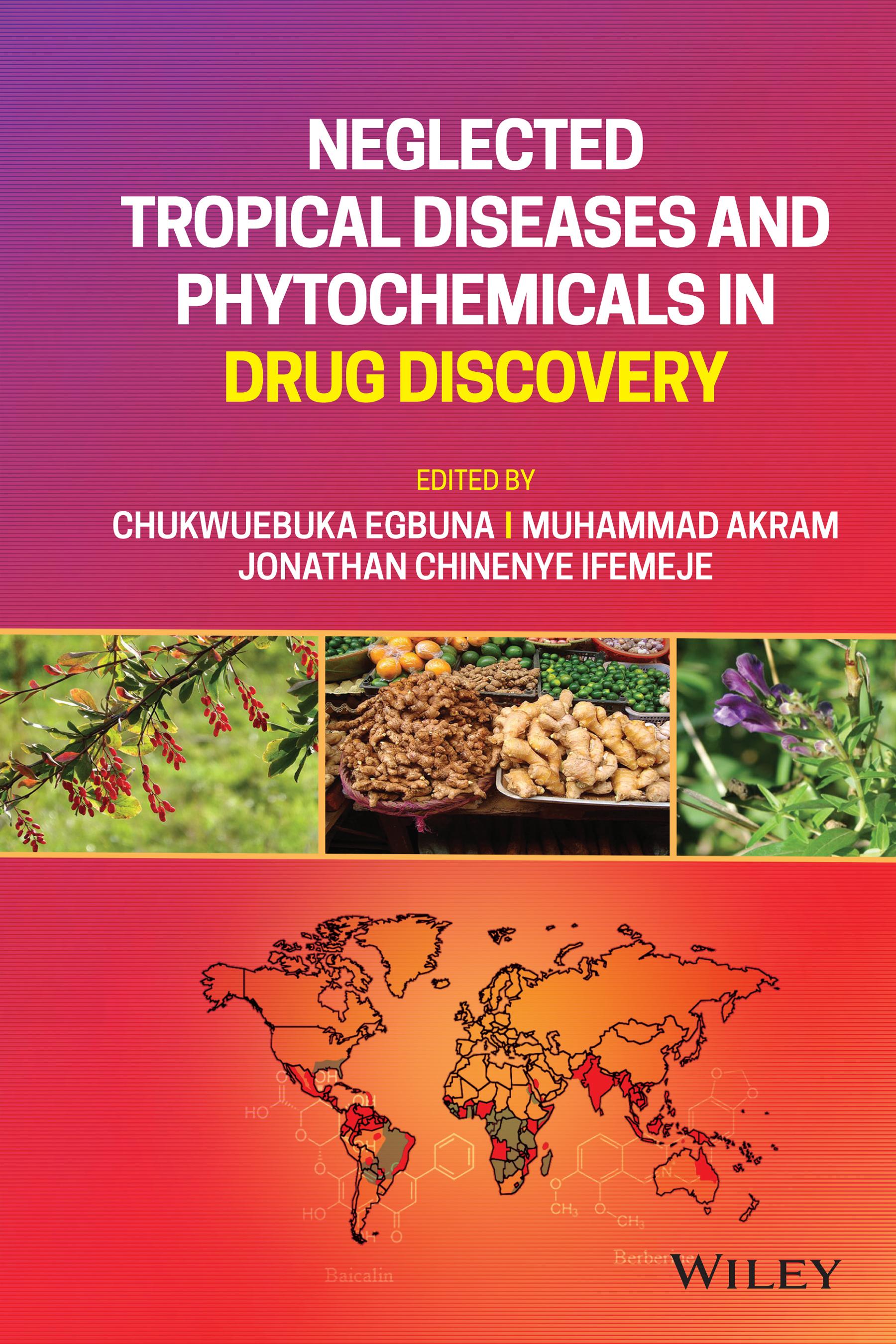
Neglected Tropical Diseases and Phytochemicals in Drug Discovery
Neglected Tropical Diseases and Phytochemicals in Drug Discovery
Edited by
Chukwuebuka Egbuna
Chukwuemeka Odumegwu Ojukwu University, Uli, Nigeria
Muhammad Akram
Government College University, Faisalabad, Pakistan
Jonathan Chinenye Ifemeje
Chukwuemeka Odumegwu Ojukwu University, Uli, Nigeria
This edition first published 2022 © 2022 John Wiley & Sons, Inc.
All rights reserved. No part of this publication may be reproduced, stored in a retrieval system, or transmitted, in any form or by any means, electronic, mechanical, photocopying, recording or otherwise, except as permitted by law. Advice on how to obtain permission to reuse material from this title is available at http://www.wiley.com/go/permissions.
The right of Chukwuebuka Egbuna, Muhammad Akram, and Jonathan Chinenye Ifemeje to be identified as the authors of the editorial material in this work has been asserted in accordance with law.
Registered Office
John Wiley & Sons, Inc., 111 River Street, Hoboken, NJ 07030, USA
Editorial Office
111 River Street, Hoboken, NJ 07030, USA
For details of our global editorial offices, customer services, and more information about Wiley products visit us at www.wiley.com.
Wiley also publishes its books in a variety of electronic formats and by print-on-demand. Some content that appears in standard print versions of this book may not be available in other formats.
Limit of Liability/Disclaimer of Warranty
In view of ongoing research, equipment modifications, changes in governmental regulations, and the constant flow of information relating to the use of experimental reagents, equipment, and devices, the reader is urged to review and evaluate the information provided in the package insert or instructions for each chemical, piece of equipment, reagent, or device for, among other things, any changes in the instructions or indication of usage and for added warnings and precautions. While the publisher and authors have used their best efforts in preparing this work, they make no representations or warranties with respect to the accuracy or completeness of the contents of this work and specifically disclaim all warranties, including without limitation any implied warranties of merchantability or fitness for a particular purpose. No warranty may be created or extended by sales representatives, written sales materials or promotional statements for this work. The fact that an organization, website, or product is referred to in this work as a citation and/or potential source of further information does not mean that the publisher and authors endorse the information or services the organization, website, or product may provide or recommendations it may make. This work is sold with the understanding that the publisher is not engaged in rendering professional services. The advice and strategies contained herein may not be suitable for your situation. You should consult with a specialist where appropriate. Further, readers should be aware that websites listed in this work may have changed or disappeared between when this work was written and when it is read. Neither the publisher nor authors shall be liable for any loss of profit or any other commercial damages, including but not limited to special, incidental, consequential, or other damages.
Library of Congress Cataloging-in-Publication Data
Names: Egbuna, Chukwuebuka, editor. | Akram, Muhammad, editor. | Ifemeje, Jonathan Chinenye, editor.
Title: Neglected tropical diseases and phytochemicals in drug discovery / edited by Chukwuebuka Egbuna, Muhammad Akram, Jonathan Chinenye Ifemeje.
Description: Hoboken, NJ : Wiley, 2022. | Includes index.
Identifiers: LCCN 2021032011 (print) | LCCN 2021032012 (ebook) | ISBN 9781119616603 (hardback) | ISBN 9781119617112 (adobe pdf) | ISBN 9781119617150 (epub)
Subjects: LCSH: Tropical medicine. | Phytochemicals–Therapeutic use. | Materia medica, Vegetable. | Drug development.
Classification: LCC RC961.N4383 2021 (print) | LCC RC961 (ebook) | DDC 616.9/883–dc23
LC record available at https://lccn.loc.gov/2021032011
LC ebook record available at https://lccn.loc.gov/2021032012
Cover Design: Wiley
Cover Images: Courtesy of Egbuna; gailhampshire/Berberis vulgaris berries/Flickr; Anna Frodesiak; Courtesy of Chukwuebuka Egbuna
Set in 9.5/12.5pt STIXTwoText by Straive, Pondicherry, India
Contents
List of Contributors xxi
Preface xxvii
Part I Introduction to Neglected Tropical Diseases 1
1 Epidemiology of Neglected Tropical Diseases 3
Kurubaran Ganasegeran and Surajudeen Abiola Abdulrahman
List of Abbreviations 3
1.1 Introduction 3
1.2 Protozoan Infections 5
1.2.1 Human African Trypanosomiasis 5
1.2.2 Chagas Disease (American Trypanosomiasis) 6
1.2.3 Leishmaniasis 8
1.2.4 Amoebiasis 8
1.3 Helminth Infections 9
1.3.1 Soil-Transmitted Helminthiasis Infections 9
1.3.2 Schistosomiasis 12
1.3.3 Echinococcosis 13
1.3.4 Lymphatic Filariasis 13
1.3.5 Onchocerciasis (“River Blindness”) 16
1.3.6 Foodborne Trematodiases 17
1.3.7 Dracunculiasis (Also Called Guinea Worm Disease) 18
1.4 Bacterial Infections 19
1.4.1 Yaws 19
1.4.2 Trachoma 20
1.4.3 Leprosy 21
1.4.4 Buruli Ulcer 23
1.5 Viral Infections 24
1.5.1 Rabies 24
1.5.2 Dengue 24
1.5.3 Chikungunya 25
1.6 Fungal and Ectoparasitic Infections 26
1.6.1 Chromoblastomycosis, Mycetoma/Eumycetoma, and Other Deep Mycoses 26
1.6.2 Scabies 28
1.6.3 Myiasis 29
1.7 Future Direction 30
1.8 Conclusion 31
Acknowledgments 31
References 32
2 Neglected Tropical Diseases, Phytochemicals, Protein Targets, and Mechanisms in Drug Discovery 37
Lalit R. Samant, Tehseen M. Dhorajiwala, and Sumit T. Haldar
List of Abbreviations 37
2.1 Introduction 37
2.2 African Trypanosomiasis 39
2.2.1 Phytochemicals Against African Trypanosomiasis 40
2.3 Buruli Ulcer 41
2.3.1 Phytochemicals Against Buruli Ulcer 43
2.4 Chagas Disease 43
2.4.1 Phytochemicals Against Chagas Disease 45
2.5 Chikungunya 45
2.5.1 Phytochemicals Against Chikungunya 47
2.6 Dengue 47
2.6.1 Phytochemicals Against Dengue 49
2.7 Leishmaniasis 49
2.7.1 Phytochemicals Against Leishmaniasis 50
2.8 Leprosy 51
2.8.1 Indeterminate Leprosy 52
2.8.2 Phytochemicals Against Leprosy 53
2.9 Lymphatic Filariasis 53
2.9.1 Phytochemicals Against Lymphatic Filariasis 54
2.10 Mycetoma 55
2.10.1 Phytochemicals Against Mycetoma 57
2.11 Onchocerciasis 57
2.11.1 Phytochemicals Against Onchocerciasis 58
2.12 Rabies 58
2.12.1 Phytochemicals Against Rabies 60
2.13 Scabies 60
2.13.1 Phytochemicals Against Scabies 61
2.14 Schistosomiasis 61
2.14.1 Phytochemicals Against Schistosomiasis 62
2.15 Conclusion 65
References 66
3 Novel Bioactive Lead Compounds for Drug Discovery Against Neglected Tropical Diseases, Leishmaniasis, Lymphatic Filariasis, Trypanosomiasis (African Sleeping Sickness and Chagas Disease), and Schistosomiasis 75
Abeer M. El Sayed and Chukwuebuka Egbuna List of Abbreviations/Definitions 75
3.1 Introduction 76
3.2 Prevalence of Neglected Tropical Diseases 77
3.2.1 Leishmaniasis 78
3.2.2 Lymphatic Filariasis 84
3.2.3 Trypanosomiasis 88
3.2.3.1 African Trypanosomiasis (African Sleeping Sickness) 88
3.2.3.2 American Trypanosomiasis (Chagas Disease) 91
3.2.4 Schistosomiasis 92
3.3 Novel, Economical, and Efficacious Therapeutics from Medicinal Plants Against NTDs 96
3.3.1 Phytochemicals Effective Against Leishmania Parasite 96
3.3.2 Plants and Phytochemicals Effective Against Filarial Parasite 105
3.3.3 Plants and Phytochemicals Effective Against Trypanosomasis 111
3.3.4 Plants and Phytochemicals Effective Against Schistosomiasis 115
3.4 Future Prospects 117
3.5 Conclusion 117 References 118
Part II Protozoan Infections 135
4 Herbal, Nutritional, and Traditional Remedies for Giardiasis: Phytochemicals as Drug Candidates 137 Samrat Bhattacharyya List of Abbreviations 137
4.1 Introduction 137
4.1.1 Epidemiology and Symptoms of Giardiasis 138
4.1.2 Life Cycle of G. duodenalis 138
4.1.3 Pathophysiology of Giardial Infection 139
4.1.4 Resistance to Allopathic Drug and Relevance of Herbal Medication 140
4.2 Plant-Based Dietary Supplements for Giardiasis Management 141
4.2.1 Oligosaccharide and Disaccharidase Supplementation 141
4.2.2 Dietary Fiber-Enriched Food 143
4.2.3 Agglutinin from Wheat 143
4.2.4 Vitamin and Mineral Supplements 144
4.2.4.1 Vitamin A Supplementation 144
4.2.4.2 Compensation of Vitamin B12 144
4.2.4.3 Zinc Status Management 145
4.2.5 Fermented Vegetables as Probiotic Source 145
4.2.6 Phenolic Compound Enriched Plant Food 146
4.3 Traditional Treatment of Giardiasis with Herbal Ethnomedicine 146
4.3.1 Hints of Antiprotozoal Medicines from Ancient Communities 146
4.3.2 Domestic Remedies and Alternative Medicine for Giardiasis 148
4.3.3 Applied Spectrum of Ethnopharmacology in Different Continents 149
4.3.3.1 Asian Medicinal Extracts 149
4.3.3.2 African Traditional Medicines 150
4.3.3.3 South American Ethnomedicine 150
4.4 Phytochemical Candidates for Advanced Giardicidal Drug Development 151
4.4.1 Terpenoids 152
4.4.2 Aromatic Ether 153
4.4.3 Alkaloids 153
4.4.4 Organo-sulfur Compounds 154
4.4.5 Lipids and Steroids 155
4.4.6 Phenolic Compounds 155
4.5 Future Prospects 157
4.5.1 Extension of Medicinal Compound Screening 157
4.5.2 Methodical Studies on Toxicology and Drug Adversity 157
4.5.3 Correlation of Herbal Drugs with Molecular Targets of Giardia 160
4.6 Summary, Prospects, and Conclusion 161 References 161
5 Antiprotozoal Activity of Phytochemicals Against Entamoeba histolytica, the Causative Agent of Amoebiasis 171
Goutam Kumar Jena, Chinam Niranjan Patra, and Jnyanaranjan Panda List of Abbreviations 171
5.1 Introduction 171
5.2 Life Cycle of Entamoeba histolytica 173
5.3 Diagnostic Techniques for Identification of E. histolytica 174
5.3.1 Intestinal Amoebiasis 174
5.3.1.1 Microscopy 174
5.3.1.2 Culture and Isoenzyme Analysis 175
5.3.1.3 Antigen Detection Test 175
5.3.1.4 Molecular-Based Test 175
5.3.1.5 Point-of-Care (POC) Test 175
5.4 Treatment of Amoebiasis 176
5.5 Alternative Treatment for Amoebiasis 176
5.6 Chemical Structure of Phytochemicals Effective Against E. histolytica 177
5.7 Possible Mechanisms of Phytochemicals as Antiamoebic 177
5.8 Future Projections 180
5.9 Conclusion 180 References 181
6 Antileishmanial Potentials of Phytochemicals 183
Shahira M. Ezzat, Mohamed A. Salem, and Ahmed Zayed
6.1 Introduction 183
6.2 Antileishmanial Activity of Propolis 184
6.2.1 Propolis from Turkey 184
6.2.2 Propolis from Brazil 184
6.2.3 Propolis from Portugal 185
6.2.4 Propolis from Cuba 185
6.2.5 Propolis from Ecuador 185
6.3 Antileishmanial Activity of Wild Mushrooms 186
6.4 Antileishmanial Activity of Medicinal Plants from Various Flora 187
6.4.1 Peruvian Flora 187
6.4.2 Ecuadorean Flora 189
6.4.3 Mexican Flora 190
6.4.4 Bolivian Flora 191
6.4.5 Iranian Flora 191
6.5 Antileishmanial Activity of Chemical Constituents 192
6.5.1 Alkaloids 192
6.5.2 Flavonoids 193
6.5.3 Terpenes 193
6.5.4 Glycoglycerolipids 193
6.5.5 Guttiferone A as a Lead Compound for Semisynthesis of Antileishmanial Molecules 193
6.6 Conclusion 194 References 194
Part III Helminth Infections 199
7 Prospects of Phytochemicals for the Treatment of Helminthiasis 201 Muhammad Akram, Charles Oluwaseun Adetunji, Ejaz Mohiuddin, Tolulope Olawumi Oladosun, Phebean Ozolua, Frances N. Olisaka, Chukwuebuka Egbuna, Olugbenga Samuel Micheal, Juliana Bunmi Adetunji, Leena Hameed, Chinaza Godswill Awuchi, Kingsley C. Patrick-Iwuanyanwu, and Olugbemi Tope Olaniyan
List of Abbreviations 201
7.1 Introduction 202
7.1.1 History 203
7.1.2 Prevalence 203
7.2 Molecular Characteristics of Soil-transmitted Helminthiasis 203
7.3 Clinical Features and Pathogenesis 204
7.4 Prevention 206
7.5 Treatment 207
7.6 Plants and Phytochemicals with Anthelmintic Activities 208
7.6.1 Modes of Action of Phytochemical Against the Soil-transmitted Helminthiasis 212
7.7 Scientific Reports of Medicinal Plants with Anthelmintic Properties 212
7.7.1 Adhatoda vasica 212
7.7.2 Allium sativum 212
7.7.3 Baliospermum montanum Muell 213
7.7.4 Butea monosperma 213
7.7.5 Calotropis procera 213
7.7.6 Carica papaya 213
7.7.7 Ficus benghalensis 214
7.7.8 Mimosa pudica 214
7.7.9 Punica granatum 214
7.7.10 Verbascum thapsus 214
7.7.11 Zingiber officinale 215
7.8 Future Prospects 215
7.9 Conclusion 216 References 216
8 Efficacy of Phytochemicals of Medicinal Plants for the Treatment of Human Echinococcosis: Echinococcal Disease, Hydatidosis, or Hydatid Disease Drug Discovery 225 Charles Oluwaseun Adetunji, Chukwuebuka Egbuna, Tolulope Olawumi
Oladosun, Muhammad Akram, Olugbenga Samuel Micheal, Frances N. Olisaka, Phebean Ozolua, Juliana Bunmi Adetunji, Goddidit Esiro Enoyoze, and Olugbemi Tope Olaniyan List of Abbreviations 225
8.1 Introduction 226
8.2 Molecular Analysis 228
8.3 Life Cycle of Echinococcosis 228
8.4 Previous Studies on the Positive Effects of Medicinal Plants and Phytochemicals 230
8.4.1 In vitro and in vivo Effect of Phytochemicals Against Echinococcus Infection 234
8.5 Synthetic Drugs Previously Used for Management of Echinococcosis Disease 238
8.6 Conclusion and Future Prospects 239 References 239
9 Filaricidal Activity of Phytochemicals Against Lymphatic Filariasis 245
Jayashree V. Hanchinalmath, Darcia D’mello, Kirankumar Shivasharanappa, T. Pramod, and Sharangouda J. Patil
List of Abbreviations 245
9.1 Introduction 246
9.2 Life Cycle of the Parasite 247
9.3 Synthetic Drugs Used for Treatment of Lymphatic Filariasis 248
9.4 Phytochemicals Used for the Treatment of Lymphatic Filariasis 250
9.4.1 Acacia auriculiformis 250
9.4.2 Aegle marmelos 250
9.4.3 Alnus nepalensis 256
9.4.4 Andrographis paniculata 256
9.4.5 Azadirachta indica 256
9.4.6 Bauhinia racemosa 256
9.4.7 Butea monosperma 257
9.4.8 Caesalpinia bonducella 257
9.4.9 Cardiospermum halicacabum 257
9.4.10 Centratherum anthelminticum 258
9.4.11 Excoecaria agallocha 258
9.4.12 Ficus racemosa 258
9.4.13 Glycyrrhiza glabra 258
9.4.14 Hibiscus sabdariffa 259
9.4.15 Lantana camara 259
9.4.16 Leucas cephalotes 259
9.4.17 Mallotus philippensis 260
9.4.18 Morinda citrifolia 260
9.4.19 Moringa oleifera 260
9.4.20 Plumbago indica 260
9.4.21 Pongamia pinnata 261
9.4.22 Psoralea corylifolia 261
9.4.23 Ricinus communis 261
9.4.24 Saxifraga stracheyion 261
9.4.25 Sphaeranthus indicus 262
9.4.26 Streblus asper 262
9.4.27 Trachyspermum ammi 262
9.4.28 Vitex negundo 262
9.4.29 Xylocarpus granatum 263
9.4.30 Zingiber officinale 263
9.5 Future Perspective 263
9.6 Conclusion 264 References 264
10 Dracunculiasis (Guinea Worm Disease) and Phytochemicals in Drug Discovery 271
Muhammad Akram, Chukwuebuka Egbuna, Mehwish Iqbal, Zarrin Basharat, Mithun Rudrapal, Kingsley C. Patrick-Iwuanyanwu, Johra Khan, and Chukwuemelie Zedech Uche
List of Abbreviations 271
10.1 Introduction 271
10.2 Historical Insights of Dracunculiasis 273
10.3 Prevalence, Burden, and Distribution of Disease 273
10.4 Life Cycle, Pathogenesis, and Clinical Manifestations of Dracunculiasis 273
10.5 Prevention and Eradication of Disease 275
10.6 Medicinal Plants and Phytochemicals Active Against Dracunculiasis 276
10.7 Conclusion 277
Acknowledgments 277 References 277
11 Medicinal Potentials of Phytochemicals as a Source of Drugs for the Treatment of Onchocerciasis (River Blindness) 283
Chandrashekar Srinivasa, Chandan Shivamallu, S. R. Santhosh Kumar, P. Sushma, Shiva Prasad Kollur, Seema J. Patel, S. S. Patil, R. Suhas, Chukwuebuka Egbuna, and Bui Thanh Tung
List of Abbreviations 283
11.1 Introduction 284
11.2 Biology and Life Cycle of Onchocerca volvulus 284
11.2.1 Blackflies – the Vector of Onchocerciasis 286
11.3 Onchocerciasis Distribution (Epidemiology) 286
11.3.1 African Perspectives 288
11.3.2 American Perspectives 288
11.4 Disease Symptoms 288
11.5 Disease Diagnosis 289
11.6 Disease Treatment 290
11.7 Phytochemicals as a Source of Drugs for Onchocerciasis Treatment 291
11.7.1 Lophira lanceolata 292
11.7.2 Plants Belonging to Anacardiaceae Family 292
11.7.3 Plants Belonging to Euphorbiaceae Family 292
11.7.4 Plants Belonging to Annonaceae Family 292
11.7.5 Plants Belonging to Meliaceae Family 293
11.7.6 Plants Belonging to Apocynaceae Family 293
11.7.7 Plants Belonging to Flacourtiaceae Family 293
11.7.8 Plants Belonging to Combretaceae Family 293
11.7.9 Plants Belonging to Cucurbitaceae Family 294
11.7.10 Plants Belonging to Cyperaceae Family 294
11.8 Future Projection 294
11.8.1 Disease Prevention and Elimination 294
11.9 Conclusion 295 References 295
12 Foodborne Trematodiases and Phytochemicals 299 Shashank M. Patil, Ramith Ramu, Prithvi S. Shirahatti, and K. Sumana List of Abbreviations 299
12.1 Introduction 300
12.2 Foodborne Trematodiases Affecting Liver 307
12.2.1 Opisthorchiasis and Clonorchiasis 307
12.2.1.1 Life Cycle and Transmission 307
12.2.1.2 Epidemiology 308
12.2.1.3 Pathogenesis 309
12.2.1.4 Diagnosis 310
12.2.1.5 Chemotherapy 310
12.2.1.6 Phytotherapy 310
12.2.1.7 Prevention and Control 311
12.2.2 Fascioliasis 312
12.2.2.1 Life Cycle and Transmission 312
12.2.2.2 Epidemiology 312
12.2.2.3 Pathogenesis 313
12.2.2.4 Diagnosis 313
12.2.2.5 Chemotherapy 314
12.2.2.6 Phytotherapy 314
12.2.2.7 Prevention and Control 315
12.3 Foodborne Trematodiases Affecting Lungs 315
12.3.1 Paragonimiasis 315
12.3.1.1 Life Cycle and Transmission 315
12.3.1.2 Epidemiology 316
12.3.1.3 Pathogenesis 316
12.3.1.4 Diagnosis 316
12.3.1.5 Chemotherapy 317
12.3.1.6 Phytotherapy 317
12.3.1.7 Prevention and Control 317
12.4 Foodborne Trematodiases Affecting Intestine 318
12.4.1 Fasciolopsiasis 318
12.4.1.1 Life Cycle and Transmission 318
12.4.1.2 Epidemiology 319
12.4.1.3 Pathogenesis 319
12.4.1.4 Diagnosis 319
12.4.1.5 Chemotherapy 320
Another random document with no related content on Scribd:
